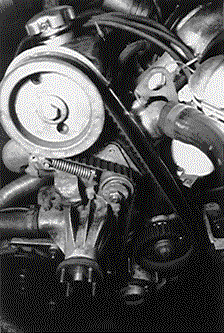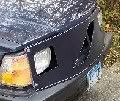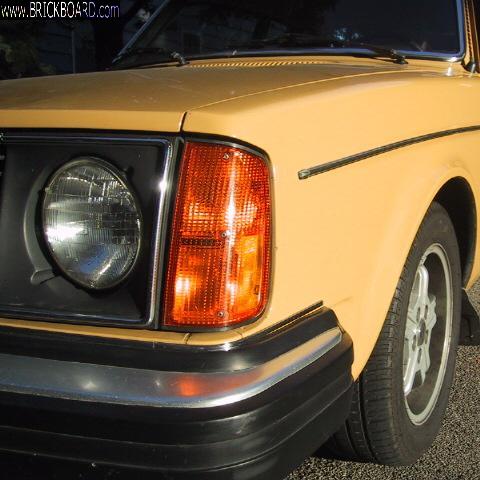|
|
|
Hello everyone. Happy Thanksgivings! While coming home from the family gathering I noticed my dashlights and gas/temp gauges started to dim until they were almost off/dead. I think I saw today that this also effected the headlights a bit. This all occured while on the freeway at speed and while under moderate to hard acceleration. The second I let off the pedal today, the headlights snapped back to full brightness. I should note that approximately a month or less ago I started getting a squeal from the engine bay. I havent had time to track it down but the sound only occurs under acceleration and gets worse under heavier acceleration, eventually going away after driving like this for about 30-45 minutes. Then its fine until it cools down for awhile. ALL of my accessory belts, the timing belt, the accessory mounting bushings, and the timing belt tensioner are less than 6 months old.
So! Ive taught my self how to do any work on vehicles thanks to my Bentley book but I am in no way a mechanic. Does this sound like an alternator problem? Perhaps the squeal is the alternator pulley? It looks fairly old. Or is this a case of an old battery and an unrelated annoying noise? I'll try to get down to the local Schucks tomorrow incase they do free battery tests. Thanks in advance folks! You've been a great help in the past!
|
|
-
|
|
|
If nothing is slipping problem is with alternator/regulator/diodes and best to just change it out. Give us the voltage at battery posts with engine at idle and at approx 2000 rpm.
--
David Hunter
|
|
-

|
|
I agree with Stickbuilder. Try tightening the alternator belt first. Then, keep in mind the brushes on the alternator and, finally, the voltage regulator.
|
|
-
|
|
|
Now *that's* an unusual symptom - lights dimming just when you accelerate.
About the only thing that would change electrical load when you accelerate is that the fuel pump is going to try to deliver a greater flow - i.e., it will work a little harder. Since the engine doesn't instantly gain rpm when you accelerate, there should be no instantaneous change in belt slippage that is speed related - just alternator load-related.
Definitely check for a weak battery, but even before you head out, I would measure your system voltage with the engine running. You should get at least 13 volts, and hopefully as much as 14.2. Then turn on all your accessories - lights, AC, blower motor, rear window defroster - and check your system voltage again. Chances are it'll drop down. Bring the rpm up to 2000 or so, and see if the system voltage comes back up to the original number. If it doesn't, then your alternator may be getting tired and in need of new brushes or regulator, or both.
--
In God We Trust. Everyone else, keep your hands where I can see them.
|
|
-
|
|
|
Thanks, I did buy a multi-meter a few weeks ago at random. This might be stupid but where exactly should I test for the voltage?
As for loose belts and whatnot... Ive deleted the AC-PS belt, the Alternator belts are tight but not too tight, all belts are straight as arrows with the crankshaft pulley, the crankshaft pulley is the old single steel piece, and I should note that the car has absolutely no problems accelerating or holding high speeds even while the lighting fades out. It occured to me on the 25 miles return trip from the family while on the freeway. I got worried and decided to pick it up from 60 to 90 and fly home. The faster I went the more the lights dimmed, especially the interior lights and the gas/temp gauge arrows.
Quick question... when the vehicle is actually running, is the power being used coming from the battery or the alternator? Just curious.
|
|
-
|
|
|
When I do a quick check, I just test across the battery terminals. One small step better is to go from + battery terminal to a good chassis ground.
Your new post works to confirm my previous guess. Power requirements go up between the square and the cube of vehicle speed. Increasing your speed from 60 to 90 (+50%) means your power to the rear wheels increased by a factor of 2-3, which in turn means your fuel pump had to deliver that much more fuel. The fuel pump has a significant current draw, so I'm pretty sure you have either a tired alternator, or for some reason your alternator drive belt is slipping at higher engine speeds. Check to make sure the belt is not bottoming in either the crank pulley or the alternator pulley. If it is, it's too narrow a belt or an extremely worn one.
The temp and gas gauges are sagging because the system voltage is dropping below the instrument voltage regulated output of about 10 volts.
--
In God We Trust. Everyone else, keep your hands where I can see them.
|
|
-
|
|
|
Fuel system is continuous circulating type. Most fuel is returned to the tank and small amount is bled off for the engine, load on pumps does not change with speed.
--
David Hunter
|
|
-
|
|
|
Good point; I didn't have my thinking cap on.
--
In God We Trust. Everyone else, keep your hands where I can see them.
|
|
-

|
|
"Quick question... when the vehicle is actually running, is the power being used coming from the battery or the alternator? Just curious."
It's supposed to come from the alternator. The battery and alt are hooked up in parallel so either will generally do the job if the other has quit - BUT normal voltage when running is between 13-14V and the battery will not provide much more than 12V. Maybe 12.5 or so when fully charged and not being given much of a load? So you see the 13-14V only occurs when the alternator is running. It comes from the alternator.
I suggest you run a lead from the battery's + terminal into the cabin and hook it to your voltmeter. You can run the tester's negative ground wire to the metal tab at the rearward end of the auto transmission shifter housing. That way you can drive and see what the voltage is doing. That might start to tell you something more than just watching lights go dim.
--
Sven: '89 245 NA, 951 ECU, expanded air dam, forward belly pan reaches oem belly pan, airbox heater upgraded, E-fan, 205/65-15 at 50 psi, IPD sways, no a/c-p/s belt, E-Codes, amber front corner reflectors, aero front face, quad horns, tach, small clock.
|
|
-

|
|
Check the main crank pulley - the bottom pulley that drives the others.
It's a 3-piece assembly. Metal center, then a hard rubber ring, then the outer pulley rim. When the metal-to-rubber bond lets go bad things can happen. Hmm... your '84 may be early enough to have the all metal drive pulley. You should look it up and find out which you have - sorry that I don't know for certain.
It's possible for it to just slip and not drive the belts properly in which case you'll hear squeal. I suspect this may be what happened on yours. At idle or when not accelerating there's little or no slippage. When you accelerate there's not enough traction to avoid slippage.
Belt slippage on a pulley would act pretty much the same - but if they are tight and there's still slippage then it can be the main pulley.
If any belts are not square/perpendicular to the engine axis then the main drive pulley definitely has separated and the pulley has moved forward or backward. I had one move backward into the timing belt cover. Not good. I've also heard of them moving forward and flying off, also no good. But as I wrote, it can slip without moving forward/backward, at least for a while.
--
Sven: '89 245 NA, 951 ECU, expanded air dam, forward belly pan reaches oem belly pan, airbox heater upgraded, E-fan, 205/65-15 at 50 psi, IPD sways, no a/c-p/s belt, E-Codes, amber front corner reflectors, aero front face, quad horns, tach, small clock.
|
|
-

|
|
your '84 may be early enough to have the all metal drive pulley
Yes. The early type pulley was used on B21/B23 engines. So that's what magister's car will have.
--
'80 DL 2 door, '89 DL Wagon
|
|
-
|
|
|
If you do have the built up crank pulley (harmonic balancer), paint a white paint line from the center out to the edge. Then see if the line stays aligned after you drive it a bit.
If it’s not that, the squealing was quite likely your belts. If it was, given how long you said they have been squealing, they are shot regardless of how new they are. Squealing for a half hour or so whenever you start out will have glazed or worn them to the point that they will not be likely to do the job.
If it's not mechanical, then you will have to check into the electric stuff.
Charley
|
|
-
|
|
|
As far as the squeal goes, I'd check out the A/C compressor. The reason is because when the A/C compressor gets older the seal dries out and starts leaking out not only freon but also th oil that's also in the system for lubrication. Eventually this causes the bearing to squeal and then completely fail. As for the dimming situation, go ahead and have the battery checked and if that checks out good, then have the alternator checked. I believe these have the internal voltage regulator and that could be going out on you. Good Luck!
|
|
-
|
|
|
Sounds like loose alternator belts to me.
|
|
|
|
|



